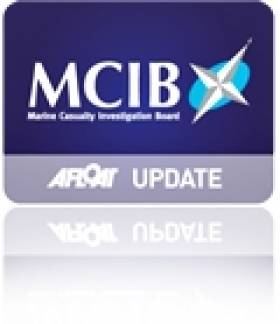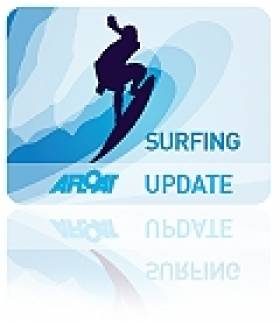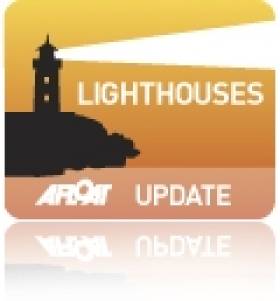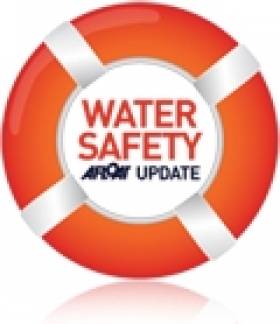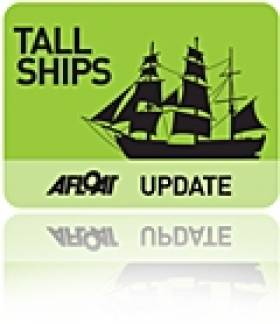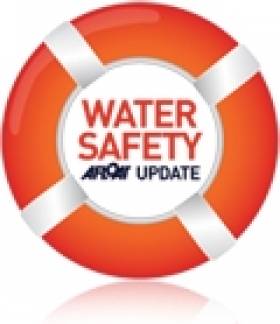Displaying items by tag: Co Clare
Lack of Planning, Safety Gear Instrumental in Donegal Point Drowning - MCIB
#MCIB - The Marine Casualty Investigation Board (MCIB) has reiterated the importance of forward planning and safety before going on the water after the drowning of a man off Donegal Point in Co Clare on 5 November last year.
The official report into the death of Latvian national Armandas Silins (52) found that he had gone out into the water in a remote area off Kilkee in a small inflatable dinghy with no safety or communications equipment.
It was established that Silins, who had been living in the Kilrush area for around a decade, had owned the dinghy for some time but there was no evidence that he had ever used it to fish.
It was also found that he had not informed any third parties of his plans for that day.
Local man William Ryan spotted Silins in the dinghy in rough seas close to an enclosed bay known as the 'Horseshoe'.
Ryan took photographs of Silins - included in the report - moments before the dinghy capsized. He immediately raised the alarm and kept in contact with the Kilkee Coast Guard Unit while Silins was in the water trying to hold on to his dinghy.
By the time a coastguard rescue team arrived in the area, Silins had become separated from the dinghy, and his body was located nearby shortly afterwards.
The MCIB report found that it was "fortuitous" that William Ryan had been in the area to observe Silins in the water and contact emergency services.
It concluded: "The circumstances attending the incident were tragic in the extreme but avoidable."
The full report on the Donegal Point incident is available to download via the link below.
Irish Surfer Needs Funds to Attend Big Wave Awards
#SURFING - A young surfer from Lahinch in Co Clare is in the running for the 'biggest wave' prize in the 2012 Billabong XXL contest for his monster ride at Mullaghmore Head, The Irish Times reports.
Ollie O'Flaherty, 24, is nominated along with Devon's Andrew Cotton for the massive surf they caught off Co Sligo on 8 March last.
It was the first visit to the world-class big wave spot by O'Flaherty, a science student at NUI Galway who is a veteran of the Co Clare scene.
As previously reported on Afloat.ie, it was Cotton who tackled the biggest wave on that day - a giant 50-footer - as some of the world's top surfers took advantage of the Viking swell.
Also nominated for the $50,000 (€38,280) prize is Irish-American surfer Garrett McNamara, who last year rode what is being called the biggest wave ever surfed in the world, a 90-foot goliath off Nazaré in Portugal.
According to the Irish Independent, O'Flaherty has put out a call for sponsorship so he can attend the awards ceremony next month.
"It's a massive honor to be able to represent Ireland," he said, but added that he is "pretty much on the breadline from what I'm doing".
Should he win, the Lahinch native said he intends to "put every cent back into surfing" and replace his seven broken boards.
The winners will be announced at the Billabong XXL Big Wave Awards in Anaheim, California on 4 May.
Mystery of Missing 'Narwhal' in Clare is Solved
#MARINE WILDLIFE - The mystery disappearance of an allegedly rare whale carcass from a Co Clare beach last week has been solved.
As The Irish Times reports, Clare County Council admitted yesterday that the "badly decomposed whale" was removed from Liscannor beach "due to public health concerns".
The vanishing of the creature had been a source of puzzlement to the Irish Whale and Dolphin Group (IWDG), after scientists dispatched to examine the carcass found no trace on arrival.
Experts had been hoping to verify whether the carcass was indeed that of a narwhal, an Arctic cetacean renowned for its unicorn-like tusk.It would have been the first recorded sighting of a narwhal in Irish waters.
Max Halliday from Shannon, who reported the find to the IWDG, said he was "convinced that what I saw is a narwhal. It had the long tusk protruding from its head, but its head was badly damaged. I am absolutely mad that I didn't take a photo."
According to the Irish Independent, the IWDG had appealed to those responsible for removing the whale to get in touch so the remains could be transferred to the Natural History Museum.
But it has since emerged that the creature was taken to a rendering plant in Derry by a team contracted by the council.
A spokesperson for Clare County Council said no remains of a tusk were found in the removal operation.
Loop Head Lighthouse Will Open To Public in 2012
#LIGHTHOUSES - Loop Head Lighthouse in Co Clare, is set to re-open to the public later this year following a successful trial scheme last summer.
As The Irish Times reports, Clare County Council opened the lighthouse for an 11-week trial period last July with the support of the Commissioners of Irish Lights, Shannon Development and Loop Head Tourism.
Some 17,000 people took up the invitation to visit the 23-metre beacon, which is still in use as a navigational aid, as previously reported on Afloat.ie.
The consortium is now looking for consultants to help expand tourism the facility with an exhibition and interpretation plan.
IWDG Secures 75% Funding for Celtic Mist Refit
#TALL SHIPS - The Irish Whale and Dolphin Group (IWDG) has secured three-quarters of the funding it required to refit its research vessel Celtic Mist.
According to The Irish Times, the Clare Local Development Company has approved the allocation of a €48,000 grant towards the refurbishment of the ketch.
The work will be carried out by Cathal Blunnie and several sub-contractors, and involves stripping down the main cabin and removing the bath and shower to increase space for crew berths.
While the ship's clock will be retained, the ship’s wheel in the main cabin will be removed and presented to the Haughey family as a gesture of appreciation.
As previously reported on Afloat.ie, the 52-foot yacht - which was gifted by the Haughey family to the IWDG to assist in its marine wildlife conservation work - entered dry dock last November in preparation for the refit work, after relocating to its new berth at Kilrush, Co Clare in July.
This followed its last jaunt at sea in its former guise, completing a leg of the Tall Ships Races from Waterford to Greenock in Scotland.
The cost of refurbishing the yacht for research and training purposes is expected to top €60,000, with an annual running cost of some €20,000, for which the IWDG is seeking ongoing financial assistance.
The group aims to get the Celtic Mist back at sea before the summer.
Whales, Dolphin Found Beached on West Coast
#MARINE WILDLIFE - Three whales and a dolphin were found beached over the past few days along Ireland's west coast, according to the Belfast Telegraph.
Dr Simon Berrow of the Irish Whale and Dolphin Group confirmed that reports had been received of a bottlenose whale on White Strand in Co Clare, a pilot whale on Fintra Beach in Co Donegal and a dolphin in Silverstrand, Co Galway - all found dead.
The latest find was a male sperm whale stranded on Omey Island in Co Galway, shed of its skin and with a broken lower jaw.
"Chances are it died offshore and got washed in with the wind," said Berrow.
The IWDG said such strandings were relatively common, although as reported on Afloat.ie earlier this year there has been growing concern over the rising number of dolphin deaths along the south coast in particular.
Coast Guard Chopper Rescues Couple in Galway Bay
The pair were lifted to safety by the Shannon-based Irish Coast Guard helicopter off the Co Clare coast, close to Blackhead.
They were subsequently treated at University Hospital Galway for possible hypothermia. No other injuries were reported.
Swimmer Dies After Being Swept Out to Sea
A 35-year-old woman died after being swept out to sea while swimming at a beach in Co Clare yesterday, the Irish Independent reports.
The Limerick woman, named locally last night as Julie Burke, was caught in a strong current at a beach across the bay from Lahinch around 3pm yesterday afternoon.
It is understood that a number of people on the beach attempted rescue, but the woman was washed away.
Shortly afterward she was located unconscious by crewmembers from the Irish naval offshore patrol vessel LE Aisling, who took her to waiting paramedics and a rescue helicopter waiting on shore.
The woman was airlifted to Galway's University Hospital, where she was pronounced dead at 5.45pm.
Celtic Mist Berths at New Home in Co Clare
The Celtic Mist sailed to its new berth at Kilrush in Co Clare on Saturday to begin its new life as a marine research vessel.
As previously reported on Afloat.ie, the 52-foot yacht was gifted by the Haughey family to the Irish Whale and Dolphin Group (IWDG) to assist in its conservation work.
It also recently completed a leg of the Tall Ships Races from Waterford to Greenock in western Scotland - the only Irish entry to compete in the race this year.
According to Irish Weather Online, the yacht will be used for research and surveying of whales, dolphins and other marine wildlife in Ireland, as well as training people to carry out marine surveys by acoustic monitoring.
Irish Weather Online also has images of the Celtic Mist arriving at its new home HERE.
Boy Drowns in Liffey, Diver Treated for Bends
Gardaí have confirmed that a 14-year-old boy drowned in the River Liffey near Clane, Co Kildare on Saturday.
According to The Irish Times, it is believed the accident occurred while the teen was playing in the river with friends. His body was removed to Naas hospital.
Elsewhere, RTÉ News reports that a diver is being treated for the bends after getting into difficulty in the sea near Kilkee, Co Clare on Sunday.
The man was airlifted by the Shannon coast guard to Galway's University Hospital after being retrieved by colleagues.


























